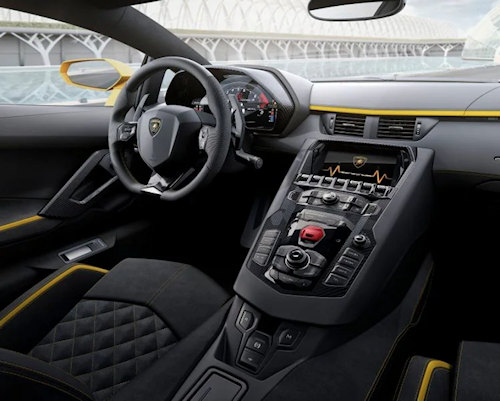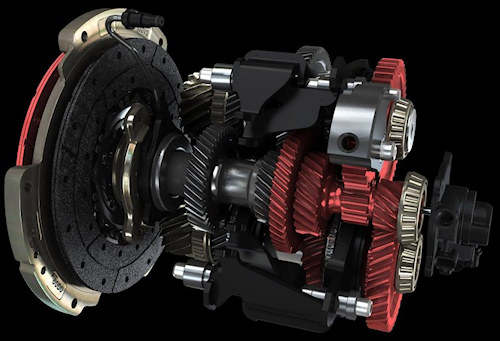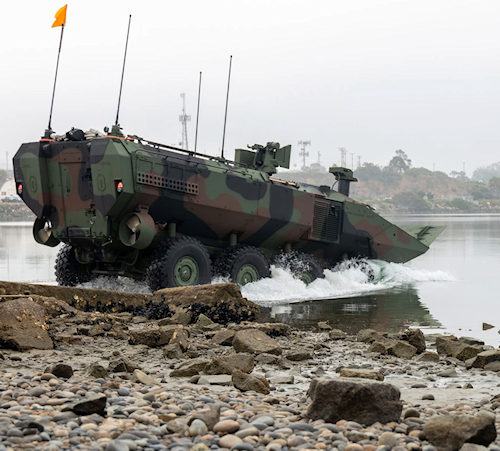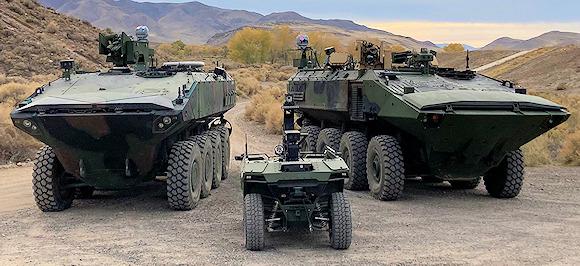In the past I have discussed the topic of automatic transmissions, examining the technical aspect and the various differences between the systems. Today we will see how, even in the military field, the technological evolution of motion transmission is now accepted with confidence even by the most sceptical, but above all considered inevitable as it makes modern systems lighter, cheaper and faster.
The detail that distinguishes an automatic gearbox from a manual one is the lack of a pedal, effectively projecting us into a new driving style made up of different movements.
The driving style represents our state of mind, character and what we want to convey about ourselves. These are concepts rooted in the manual gearbox, in reality only partially transferable to automatic systems which, although very advanced, will never equal the historic roar of the Giulia GT or Alfa 33. Today everything is entrusted to a self-adaptive control unit, to mechatronics or to the more efficient possibility of manually downshifting the gears. Maybe using the kick down or paddle boarding if you don't want to take your hands off the wheel. All this brings with it a bit of melancholy, which is actually temporary, towards traditional manual systems.
It is not uncommon for us to wonder, recalling our memories, what we would have done with a manual during the same performing manoeuvre.

Automatic supercars
We would never have thought that cars clearly created for racing could have an automatic gearbox system, even if in Formula 1, it was the Ferrari 640 designed by John Barnard that introduced a semi-automatic system in 1989. On the pages of Car safety, it is Maurizio Reggiani, former CTO of Lamborghini who clearly explains the limits of the manual: the factor is linked to the power of modern engines which would see a traditional clutch "burn out" after a few thousand kilometres. The alternative would be a larger and thicker friction disc which would however affect measurements and weights.
Also to be considered is the driver's effort in continuously pressing a pedal. Reggiani claims: on Lamborghini Diablo manual the load on the clutch pedal is 40 kg. Today if the Fan, the 12-cylinder 700 hp racing car, had the traditional gearbox, the effort would be at least 70 kg. (source Sicurauto.it)
I double clutch
They are the dynamic and European response to the traditional hydrodynamic torque converters (or multipliers) introduced in the USA as early as '39. To all intents and purposes they are electro-actuated mechanical gearboxes with a function and use identical to traditional automatic gearboxes. Two clutches and two primary shafts, one for even gears, the other for odd ones. These mesh alternately with the secondary connected to the differential.
The rotation of the engine is transmitted to two pressure plates connected to a hollow shaft which ends in the gearbox. A second shaft slides independently inside the hollow shaft, also directed to the gearbox. There are no linkages or bushings, just actuator pistons that act on the forks that move the synchronizers forwards or backwards. They work well, they are fast, light and above all they reduce consumption.
The vehicle is started or dragged with a reduced first gear which reduces friction by making the clutch integral with the flywheel within a few metres, then second gear is immediately engaged, in reality a sort of "unofficial" first gear.

To match the functioning of a double clutch with a manual one, in today's traffic, it would be necessary to always drive with your hand on the gearbox; perhaps skipping a few gears, e.g. from 2nda at the 4a etc, or just mention all the steps while maintaining a little gas. The control of the gearbox positions is also identical, where P allows locking of the toothed ring nut, N allows neutral without the ring nut locked. Everything happens with your foot on the brake, avoiding unnecessary overshoot.
The supercars use the same system, what changes are the sporting opportunities granted by the control units and the aesthetic factor represented by F1 tone buttons.
Even in the Armed Forces, automatic transmissions are now widespread in the two categories: hydraulic for large loads and automated for logistical uses and more. Mixed systems, converter with clutch lock up and traditional second clutch for manual gearbox, concept Hydrotrans (ATC81), are reserved for exceptional loads over 50t.
It is curious to remember that the first automatic transmissions used on taxis in the 30s in the USA had a similar and mixed system, manual gearbox plus converter. Taxi drivers, given the low fuel costs, often left 3 ona gear (at the time the highest), even when leaving to travel the endless avenues. In short, the oil will have warmed up a bit...
MUM-T Manned-Unmanned Teaming
The system, as per BAE Systems note, sees the light in the aeronautical field for military purposes - US Army Aviation Center -, focusing on the remote and autonomous piloting of drones, the use of AI, to revolutionize the autonomy of missions. New techniques and strategies are established, thereby reducing the risk to military personnel and increasing mission success.
 A synergy between piloted and autonomous vehicles, but also a concept brought back to sea and on land with the recent ACV Amphibious Combat Vehicle, the Marines' amphibious 8x8, enabled, thanks also to the automatic transmission (Allison), to be controlled remotely (opening photo).
A synergy between piloted and autonomous vehicles, but also a concept brought back to sea and on land with the recent ACV Amphibious Combat Vehicle, the Marines' amphibious 8x8, enabled, thanks also to the automatic transmission (Allison), to be controlled remotely (opening photo).
Are we clumsier?
Regardless of subjective attitude towards driving, we have no deficit. What has changed are the rules of life and our priorities that follow the physiological and rapid technological development suited to our needs. The first aspect that justifies a new era of vehicle management is undoubtedly traffic, but there are other factors. Pollution, consumption and performance are elements best managed by a compared to our right foot; today the shiny cars full of personality of the last century would suffer from carburetion problems and an even lower performance than the current supercharged small cars.
Then there are the regulations, such as that of July 2024 (EU regulation 2019/2144) which will impose the obligation on new registrations to be equipped with Adas safety systems, which are less effective if applied to vehicles with manual transmission. An example can come from the anti-collision radar which automatically and completely stops the vehicle only if it is automatic. With a manual gearbox you have to lower the clutch to stop completely without traumatically blocking the engine by stressing the timing belt.
In short, even a staunch supporter of traditional manual transmissions like the writer has come to admit that the choice of an automatic transmission, in reality, is not so restrictive and only requires adaptation and a new relationship with the car.
What makes us think, however, comes from the USA, the precursor country of automatic transmissions applied everywhere. From what we learn there is a reversal in the trend and supercars like Viper e Corvette maintain an important clientele only if equipped with manual gearbox.
Photo: Bae Systems / Lamborghini / Alfa Romeo archive / US Marine Corps












